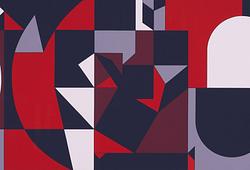Philip von Schantz
"Red currants"
Signed PvS and dated -79. Canvas 65 x 54 cm.
Alkuperä - Provenienssi
Acquired directly from the artist.
Thence by descent to the present owner.
Muut tiedot
Philip von Schantz initially studied painting under Otte Sköld and then embarked on a short training in Paris with André Lhôte. Between 1952 and 1958, he studied at the Royal Institute of Art in Stockholm. In the 1970s, he gained significant popularity among the general public, who found his still life paintings irresistible and true to nature. He employed one-point perspective, where perspective lines run parallel, and the image itself extends across the canvas, with the scale always set at 1:1, contributing to the identity and recognizable experience of the images. Recognizable elements such as white tin bowls, wooden boxes with printed letters, or simple tools like rakes, shovels, and rusty buckets conveyed a sense of security and quickly became irresistible as carriers connected to one's own upbringing and history.
Still life painting has deep roots in a historical tradition. Despite their eagerness to break away from established rules of taste, modernists have used still life as one of their central motifs throughout the 20th century. A likely explanation is that still life represents immobile objects that can be examined over an extended period. Modernists sought to find "the essence of the image" and avoided narrative and iconographic elements. Many chose not to depict objects precisely but instead focused on using them in their painting to give them a realistic significance.
Philip von Schantz went against this prevailing modern thought and harked back to the older tradition where sharp realism was essential. His paintings at times border on pure illusionism, known in the art world as trompe-l'oeil. With a straightforward appearance and crystal-clear realism, von Schantz has been creating astonishing and captivating paintings from the 1970s onwards, drawing inspiration from history and attracting audiences. It all began with motifs of old, weathered windows with lace curtains where you can feel the gentle breeze of summer, wooden planks with grain patterns, and birch trunks that appear as if they were photographed, along with large wooden crates filled with fruits and vegetables. Incredibly skillfully painted, easily comparable to many of the old masters' "Still Life" paintings from the 17th century, like the Spanish Luis Melendéz and the Flemish Osias Beert, to name a few.
In the mid-1970s, there was a breakthrough with berry motifs, shovels, buckets, and pails overflowing with various berries: gooseberries, wild strawberries, blueberries, red and black currants. He meticulously painted berry by berry, with patience and the belief that the truth lies in the exact representation.













































